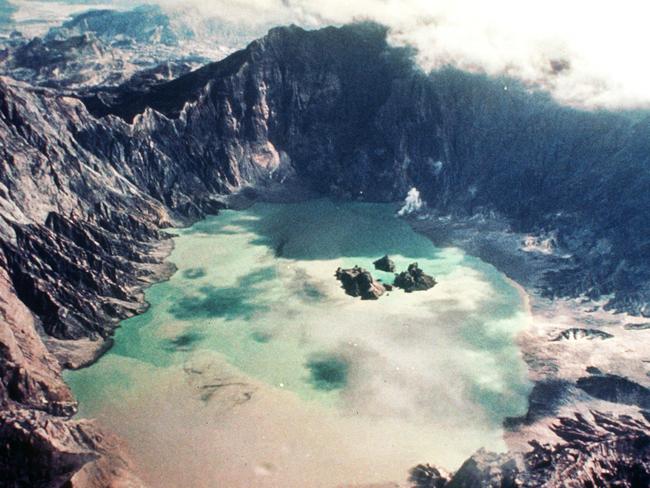Why China’s biggest ally is Philippines volcano Mt Pinatubo
IT was the biggest volcanic eruption in 100 years.But when Mount Pinatubo exploded in the Philippines in 1991, it created a vacuum which China filled.
IT was the biggest volcanic explosion in 100 years causing widespread damage, death and destruction.
Mount Pinatubo’s eruption in the Philippines in 1991 also resulted in a fortunate opportunity for Beijing.
The eruption led to the permanent closure of the nearby US run Clark Air Base and helped China slowly fill a vacuum in the region, Quartz reported.
The installation, which was just 14km from the mountain, was damaged as was the US Subic Bay Naval Base, 32km away.
With a combined population of 30,000, the military installations were abandoned the following year when the cost of repair became too high.

The June 15 explosion destroyed $245 million worth of crops, damaged infrastructure spread across a 400 sq km area, and led to the deaths of 250 people, the New York Times reported.
And while US forces left the base in time, the estimated $500 million damage bill caused led then Defense Secretary Dick Cheney to declare it would be closed.
The eruption was followed by a massive typhoon which drenched the region.
The effect on the Clark Air Base was more staggering and according to Stripes, left it “covered by thick muck the consistency of cement.”
The Philippines’ Clark Air Base is now used as a business jet centre.
While other factors including a shrinking Pentagon budget were also to blame, the volcano sped up America’s withdrawal from the region.
It also, according to Quartz, provided a chance for Beijing to make its move and it wasn’t long before China began claiming territory without a watchful US close by.

DISPUTES AND TENSIONS
Beijing has been at the centre of several disputes in the South China Sea, several of which have involved Washington.
Most recently, it sent military vessels and warplanes to “warn off” an American warship that sailed near a disputed island in the South China Sea.
The USS Stethem destroyer passed less 22km (12 nautical miles) from tiny Triton Island in the Paracel Islands archipelago, which is occupied by China but also claimed by other Asian countries.

Beijing called it a provocative action which threatened China’s sovereignty and security.
The move came as Beijing continues muscular efforts to cement its claim to nearly all of the South China Sea, parts of which are also claimed by Taiwan, the Philippines, Brunei, Malaysia and Vietnam.
According to the United Nations countries can establish the reach of their territorial waters up to a limit of 12 nautical miles.
In June tensions were further heightened after it emerged Beijing was building an underwater observation system across the disputed East and South China seas.
The $400 million project, which is expected to take five years to build, sparked some concerns that it could be used detect the movement of foreign ships and feed information back to China.
— with wires



